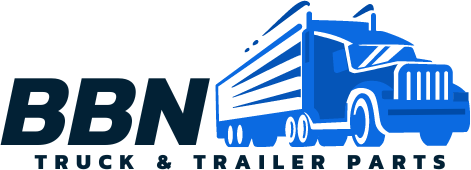In the dynamic world of transportation and logistics, prioritizing safety is paramount for truck drivers, fleet operators, and everyone on the road. Trucks and trailers are essential components of the global supply chain, and ensuring their safe operation is crucial. This comprehensive guide delves into the key aspects of truck and trailer safety, covering everything from pre-trip inspections to emergency protocols.
Pre-Trip Inspections:
Before embarking on any journey, a thorough pre-trip inspection is a fundamental step in ensuring the safety of a truck and its trailer. This includes checking the tires for proper inflation and tread depth, examining the brakes, lights, signals, and ensuring that all fluid levels are within the recommended range. Regular inspections help identify potential issues before they escalate, preventing breakdowns and accidents on the road.
Load Securement:
Proper load securement is critical to maintaining balance and stability during transit. Secure cargo with appropriate straps, chains, or other restraining devices, ensuring that the load is evenly distributed and within the specified weight limits. Adequate load securement not only enhances safety but also minimizes the risk of accidents caused by shifting cargo.
Driver Training and Certification:
Investing in comprehensive driver training programs is a key component of ensuring truck and trailer safety. Drivers should be well-versed in safe driving practices, defensive driving techniques, and emergency procedures. Regular training and certification updates keep drivers informed about the latest safety regulations and best practices in the industry.
Technology Integration:
Embracing cutting-edge technology can significantly enhance truck and trailer safety. Collision avoidance systems, lane departure warnings, and telematics provide real-time monitoring of a vehicle’s health and driver behaviour. The integration of such technologies not only prevents accidents but also contributes to the overall efficiency of fleet management.
Regular Maintenance:
A well-maintained truck and trailer are less prone to malfunctions and accidents. Establishing a routine maintenance schedule for engine checks, brake inspections, and other critical components is essential. Timely repairs and replacements ensure that the vehicle operates at peak performance, reducing the risk of unexpected breakdowns on the road.
Driver Fatigue Management:
Driver fatigue is a significant contributor to accidents in the trucking industry. Implementing effective fatigue management strategies, such as regular breaks, adequate rest periods, and promoting healthy sleep patterns, is crucial. Fleet operators should also encourage open communication about fatigue-related concerns to ensure drivers prioritize their well-being.
Weather and Road Conditions Awareness:
Adverse weather conditions and challenging road surfaces can pose significant safety challenges for truck drivers. Training drivers to adapt to different weather conditions, emphasizing the importance of reducing speed in adverse weather, and providing them with real-time weather updates contribute to safer journeys.
Emergency Protocols:
Despite all precautions, emergencies can still occur. Drivers should be well-trained in emergency protocols, including proper responses to accidents, breakdowns, and adverse weather conditions. Having an emergency kit on board, equipped with essential tools and supplies, is essential for addressing unforeseen circumstances.
Regulatory Compliance:
Staying abreast of and complying with regulatory standards is non-negotiable for ensuring truck and trailer safety. This includes adhering to weight limits, following hours-of-service regulations, and complying with transportation safety authorities. Failure to comply with these regulations not only jeopardizes safety but can also result in legal consequences.
Continuous Improvement:
Safety is an evolving aspect of the trucking industry, and fostering a culture of continuous improvement is crucial. Regularly reviewing and updating safety protocols, encouraging feedback from drivers, and incorporating lessons learned from incidents contribute to an environment where safety is prioritized at every level.
Conclusion:
Safety is the cornerstone of a successful and sustainable trucking industry. Implementing a comprehensive approach to truck and trailer safety, encompassing pre-trip inspections, driver training, technology integration, and emergency protocols, is vital for safeguarding the well-being of drivers, cargo, and all road users. By prioritizing safety first, the trucking industry can contribute to a safer and more efficient transportation network globally.

